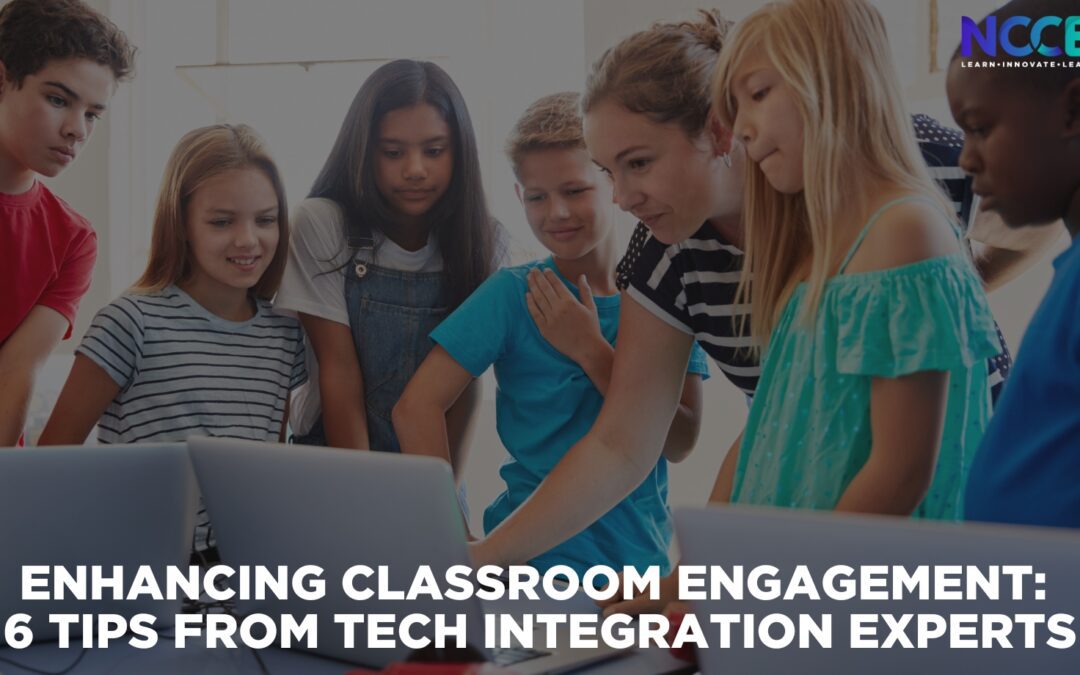As technology has rapidly progressed over the last several decades, it has become integral to everyday modern life. Computers have moved from being solely the province of the corporate and research worlds to now being in nearly every consumer’s hands, and the technological tools we have available to us are more powerful than ever. It is no surprise that technology is also playing a more pivotal role in classrooms.
For schools aiming to familiarize their students with computer technology as a learning tool, integrating sophisticated programs into the curriculum can significantly elevate the learning experience. At the Northwest Council for Computer Education (NCCE), we help schools incorporate technological tools into every facet of school operations, from classrooms to school administration, making them run more efficiently and helping students with different learning challenges become more engaged, productive, and proficient. Here are six tips on how utilizing advanced tech tools can boost student engagement and make learning more interactive and enjoyable.
1. Leverage Interactive Simulations
Interactive computer simulations can transform abstract concepts into tangible experiences. For example, programs like PhET Interactive Simulations and Gizmos offer a wide range of science and math simulations that allow students to experiment with variables and observe real-time outcomes. These tools help demystify complex theories by providing hands-on and sensory experiences that are both educational and entertaining. Interactive simulations:
- Enhance understanding of complex concepts
- Encourage experimentation and critical thinking
- Provide immediate feedback and results
2. Utilize Coding Platforms
Understanding coding is a valuable skill in the modern world, and platforms like Scratch, Tynker, MakeCode and Code.org provide a fun and engaging way for students to learn programming. These platforms use visual programming languages that make it easy for beginners to grasp coding fundamentals. By developing customized games, stories, and animations, students soon develop problem-solving skills and creativity and gain satisfaction from seeing how their efforts translate into usable tools. And bring all these tools together in the student favorite Minecraft Education! Why Learn coding?
- Fosters logical thinking and problem-solving
- Stimulates creativity and innovation
- Prepares students for future tech-related careers
3. Incorporate Virtual and Augmented Reality
Virtual Reality (VR) and Augmented Reality (AR) devices can bring immersive experiences to the classroom. Tools like Google Expeditions for Education and CoSpaces Edu allow students to explore historical sites, dive into the ocean, or even journey through the human body, all from their classroom seats. These technologies have tremendous potential to make learning highly interactive and memorable. These tools:
- Provide immersive, hands-on learning experiences
- Enhance retention and comprehension
- Make learning fun and engaging
4. Embrace Gamification
Gamification involves incorporating game elements into educational activities. Platforms like Quizziz and Classcraft turn quizzes and classroom management into games, motivating students through rewards and competition. This approach increases student engagement and makes learning enjoyable. Gamification learning:
- Increases motivation and participation
- Provides instant feedback and rewards
- Makes learning fun and competitive
5. Employ Collaborative Tools
Collaboration is a crucial skill in both academic and professional settings. Tools like Google Workspace for Education and Microsoft Teams foster collaboration by allowing students to work on projects simultaneously by sharing documents and communicating in real-time. These tools facilitate group work and teach students effective communication and teamwork. Online collaboration projects:
- Enhance collaborative skills
- Facilitate real-time cooperation and feedback
- Simplify project management and teamwork
6. Integrate Digital Storytelling
Digital storytelling tools like Adobe Express and Book Creator enable students to express their creativity and knowledge through multimedia presentations. These tools allow students to combine text, images, audio, and video to create compelling stories and presentations, making learning more dynamic and personalized. Storytelling applications:
- Encourage creativity and self-expression
- Enhance digital literacy and communication skills
- Spur creative energy to make engaging and interactive presentations
In short, integrating sophisticated tech tools into the classroom can enhance student engagement, improve learning outcomes, and prepare students for a technology-driven future. As experts in tech integration, NCCE is committed to helping schools navigate this journey, ensuring that technology becomes a powerful ally in education. Contact NCCE today to learn more about transforming your classrooms into dynamic, interactive, and engaging environments where students are excited to learn and explore.

